Click above for high-res gallery of the Infiniti EX35
Infiniti first showed the world its new EX35 as a concept at last year's New York Auto Show and then put it on sale in fall essentially unchanged. Although the Acura RDX has been described as a sports car in CUV clothes, it's based on a fundamentally front-wheel-drive architecture. If Honda had instead taken the S2000 roadster, stretched it and jacked it up a bit, they would have come up with something more akin to the EX35. In fact, that's almost exactly what Nissan did.
The EX35 is based on the platform of the G35 sedan/G37 coupe and, of course, the fun loving 350Z. If you want a crossover with sports car genes, it would be hard to find something more suitable. Of course, wearing a badge from the Infiniti side of the family tree means getting a handsomely tailored suit and all the latest high-tech gizmos to go along with the go-fast hardware. It also means a few sacrifices to ultimate utility, but we'll get to that after the jump.
Photos Copyright ©2008 Sam Abuelsamid / Weblogs, Inc.
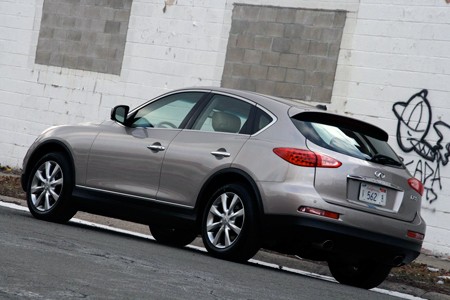
One look at the EX35 and it's obvious that it shares the current Infiniti family DNA. From the gently curving contours over the wheel arches to the shape of the greenhouse, the look is that of a highly paid athlete coming out of the locker room after the game in a Saville Row suit. However, the sports car genes are most immediately apparent in the profile.
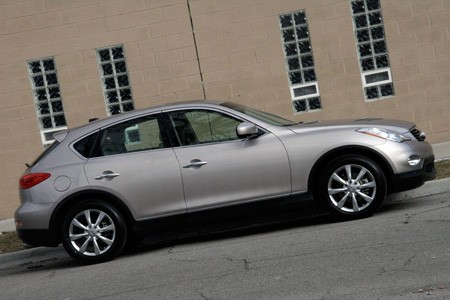
Most crossovers today are derived from front-wheel-drive platforms with transverse-mounted powertrains, and that's reflected in their relatively short hoods. Even the north-south inline six-powered BMW X3 and X5 share these proportions providing a somewhat more utilitarian look. Not so this Infiniti. The passenger compartment has been pushed well back giving the classic long hood sports car proportions, even with its taller-than-Z-car stance. It's an interesting look for this type of vehicle. Even compared to its big brother the FX, the proportions are amplified with a seemingly longer distance between the trailing edge of the wheel well and the leading edge of the door.
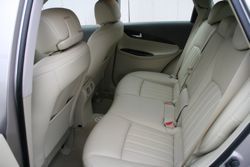 Pushing the wheels forward allowing for a front mid-engine layout helps the rear-drive EX achieve a weight distribution of 52/48, the same as the RDX. The all-wheel-drive version shifts that to 55/45. The sporting proportions, however, unfortunately sacrifice rear cabin space. Even though the Infiniti is two inches longer with an extra six inches of wheel base, it has nine inches less rear leg room than the Acura RDX. The back seat is definitely on the tight side. The Acura also has a 12 cubic foot advantage in cargo space behind the second row. Even in the front row, the EX has a decidedly snug cockpit-like layout. There's not a lot of stretch out room here.
Pushing the wheels forward allowing for a front mid-engine layout helps the rear-drive EX achieve a weight distribution of 52/48, the same as the RDX. The all-wheel-drive version shifts that to 55/45. The sporting proportions, however, unfortunately sacrifice rear cabin space. Even though the Infiniti is two inches longer with an extra six inches of wheel base, it has nine inches less rear leg room than the Acura RDX. The back seat is definitely on the tight side. The Acura also has a 12 cubic foot advantage in cargo space behind the second row. Even in the front row, the EX has a decidedly snug cockpit-like layout. There's not a lot of stretch out room here.
Where the Infiniti interior shines is the quality of the materials. The EX35 has the look and feel of a luxury car with its "wheat" colored leather and swaths of dark maple on the door panels and center console. Just below the navigation controls is the typical elliptical Infiniti analog clock. The layout of the EX center stack and controls means that pretty much everything falls readily to hand.
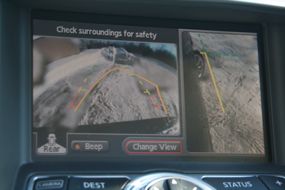 Among the array of buttons just below the navigation screen is one labeled Camera. This is part of the $1,950 technology package. Like so many vehicles today, the EX has a tailgate mounted rear view camera to show you what's immediately behind the car. However, shifting the EX into reverse brings up a display on the nav screen with two views, the one behind and another showing what's on the right side of the car. This is part of the Around View Monitor. Several cars with rear cameras overlay guide lines on the image to aid backing into a parking space. The EX takes that one step further with additional guide lines that indicate where the vehicle will actually go based on the steering input.
Among the array of buttons just below the navigation screen is one labeled Camera. This is part of the $1,950 technology package. Like so many vehicles today, the EX has a tailgate mounted rear view camera to show you what's immediately behind the car. However, shifting the EX into reverse brings up a display on the nav screen with two views, the one behind and another showing what's on the right side of the car. This is part of the Around View Monitor. Several cars with rear cameras overlay guide lines on the image to aid backing into a parking space. The EX takes that one step further with additional guide lines that indicate where the vehicle will actually go based on the steering input.
The video meant to be presented here is no longer available. Sorry for the inconvenience.
In total, the EX has four outward facing cameras: one on the tailgate, one on the bottom of each side mirror and a fourth looking ahead through the windshield. Pressing that camera button when the vehicle is stationary brings up an overhead view of the car and the view all around the car from the cameras. Once you start moving, the camera view switches off. The cameras come back into play above 40 mph for the lane departure warning and prevention systems.
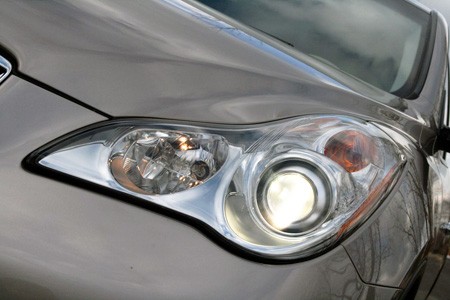
When the warning and prevention systems are switched on, the cameras look for the edge of the road or the lane markers. If the car starts to drift toward the edge of the lane, a warning beep goes off. If the prevention system is on, when the car reaches the edge of the lane the stability control applies a little bit of brake torque to the opposite side wheel, gently nudging the car back toward the center of the lane. It's actually kind of a spooky feeling when it happens. It's not abrupt and it's easily over-ridden if you actually wanted to pull off the road or change lanes. The system won't save a drunk driver weaving around, but someone who is momentarily distracted and drifting over will be assisted.
Another element of the technology package is the adaptive cruise control. A sensor in the bottom of the grille emblem detects the distance to the vehicle ahead and automatically maintains a safe distance. If the vehicle you're following slows down, the Infiniti's brakes apply reducing your speed. When things clear up, the EX automatically returns to the set speed.
Restoring that speed falls to perhaps the most important element of the EX, the engine. Here is where the EX holds its biggest advantage over the Acura. Like its lower slung siblings, the EX is propelled by Nissan's sweetheart VQ V6. As the model nomenclature implies, this one displaces 3.5L and puts out 297hp and 253lb-ft of torque. As in every other application, this free-revving six cylinder is a wonderful example of the breed. Squeezing the accelerator brings instant lag free response from the engine room.
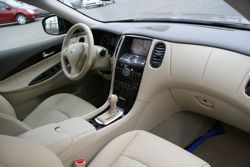 The EX has a firm, sports sedan ride, but it doesn't beat you up. The bitterly cold winter weather that descended on us while the EX was here didn't allow for much back road thrashing, but we did get to exercise the traction control and stability control systems. The latter in particular was very well behaved, keeping the EX pointed where the steering wheel input intended without out any drama.
The EX has a firm, sports sedan ride, but it doesn't beat you up. The bitterly cold winter weather that descended on us while the EX was here didn't allow for much back road thrashing, but we did get to exercise the traction control and stability control systems. The latter in particular was very well behaved, keeping the EX pointed where the steering wheel input intended without out any drama.
The big question that arises from driving the EX35 is what exactly is the point? Ideally this thing would have the same ride height as the G35 and be badged G35 Touring or something similar. The EX is most certainly not an off-road vehicle and the extra ride height doesn't really add any useful functionality. With it's attractive and sporting but snug-fitting interior, the EX doesn't add much utility to CUV equation.
Perhaps it's more of a marketing driven move in a world where American drivers remain enamored with looking down upon their fellow travelers. Lexus offered something similar to this with the wagon/hatch version of the first generation IS, and it wasn't a huge sales success. In that case, the EX35 offers much of the character of the sedan and coupe with a hint of the higher riding FX. For those that prefer the balance skewed a little more toward utility while retaining the sport, the FX offers another alternative though is also down on utility compared to some of its large CUV competitors. The EX35 starts at just over $31,000 in base RWD form with the AWD Journey model we tested coming in at over $45,000, so buyers will have to consider if good looks, trick technology and a sweet powertrain are worth sacrificing some practicality.
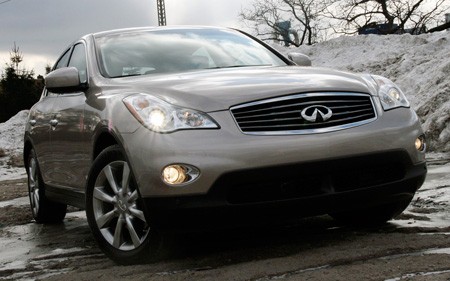
Photos Copyright ©2008 Sam Abuelsamid / Weblogs, Inc.
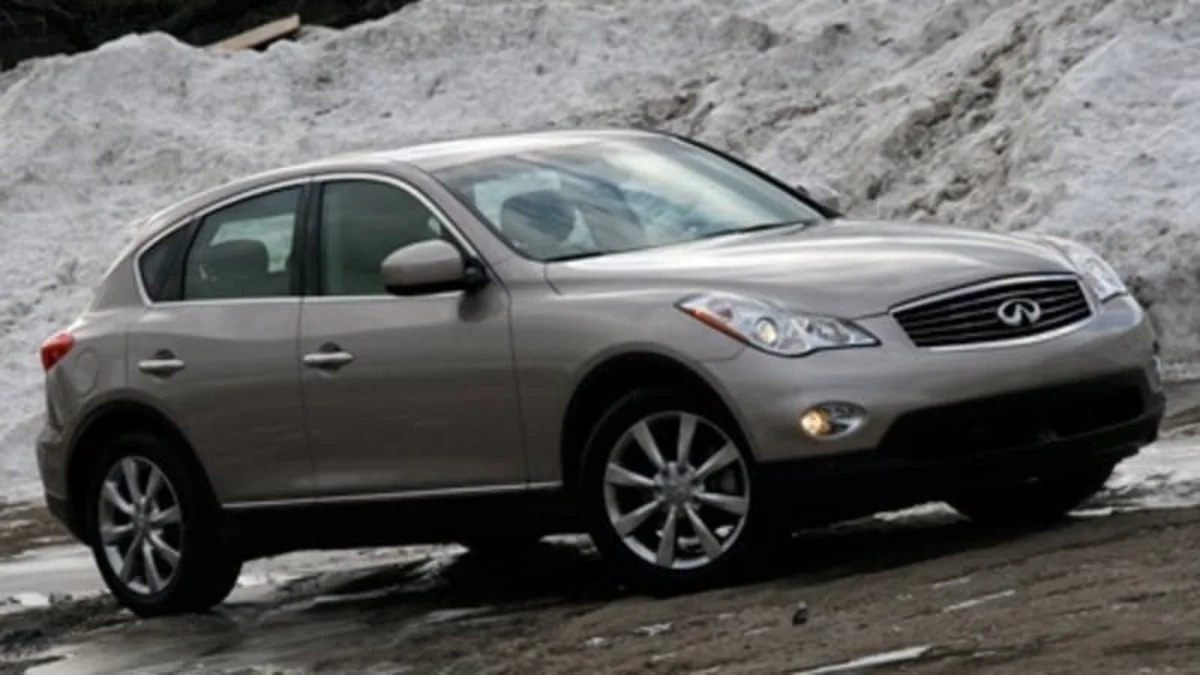


Sign in to post
Please sign in to leave a comment.
Continue